Many people are familiar with the multitude of health benefits of American ginseng, but are unsure of the best way to use or take it. While many easy-to-use supplements, pills and extracts exist, it is difficult to know the exact source and quality of the product. Even product labels can be misleading about the exact quantity or dosage. On the other hand, natural, high quality powder or whole roots can be purchased online directly from the farm where they are grown. Watch the video and read this article to learn how to use and prepare ginseng powder and whole ginseng roots!
- Tea using Powder
- Iced Tea
- Tea using Whole Roots
- Coffee using Powder
- Coffee using Prongs or Roots
- Smoothie
- Soup
- Herb Pot
- Slices
- Tincture
Brewing Ginseng Tea using Ginseng Powder
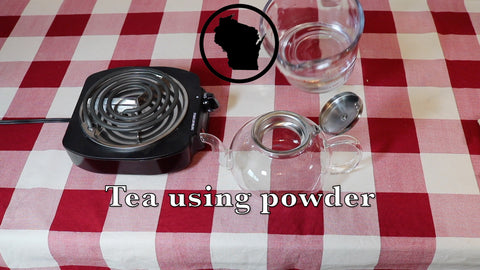
Ginseng tea is one of the easiest and most well-known ways to take ginseng. By making tea, the nutrients which are responsible for the root’s health benefits are dissolved in the hot water. This makes the nutrients much easier for the digestive system to absorb compared to swallowing capsules or eating dried roots.
In order to make tea using powder, first heat water to 208 degrees. This is the ideal temperature to extract all the ginsenoside and gintonin nutrients. Next, add 2-3 grams of ginseng powder, which is about 1 teaspoon, to a tea bag. Pre-made tea bags are also available.
(A tea bag is not necessary, but it allows the powder to be removed before drinking the tea. If you choose not to use a tea bag, you can either swallow the powder or let it settle at the bottom of your cup and discard. Almost all of the ginsenosides will already be dissolved in the hot water.)
Pour 8 oz of hot water over the ginseng, steep for 3-5 minutes, add honey to taste and enjoy!
Adding Ginseng Powder to Coffee
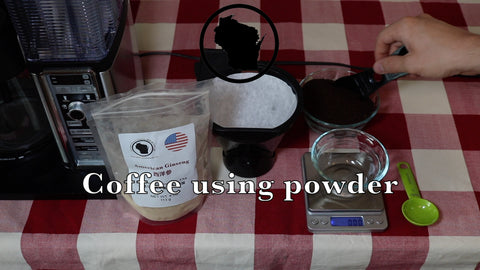
Ginseng and coffee are a match made in heaven. Since ginseng can have a calming effect on the body and promote focus, it is great in combination with caffeine. The ginsenosides and the caffeine work together to provide focus and stable energy.
In order to brew ginseng coffee, measure out about 2 grams of ginseng powder per 8 oz cup of brewed coffee. This is about 16 grams (about 2 heaping tablespoons) for an average size pot of coffee. Mix the powder into the pre-ground coffee beans and brew the coffee normally. Pour a mug and enjoy! Add honey for an even better taste!
Blending Ginseng Powder into Smoothies
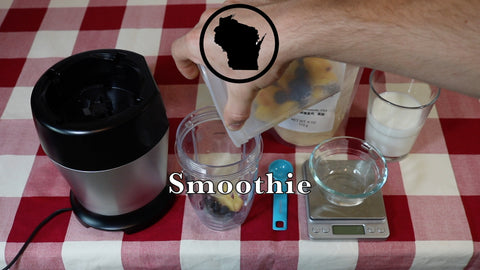
Ginseng powder is a great mix-in for smoothies! Just blend 1-2 teaspoons of powder into your favorite smoothie recipe to give it that extra boost of nutrients and energy. Some fruits which taste great with ginseng are pineapples, mangos and peaches. If you don’t drink smoothies, ginseng powder can also be stirred into yogurt and oatmeal too!
Adding Whole Dried Ginseng Roots to Chicken Soup

Ever tried ginseng noodle soup? Ginseng roots add a delicious, earthy flavor which tastes great in any chicken broth based soup or stew. It is also well known for helping the body combat colds and flu by giving the immune system a boost. Adding whole roots to chicken noodle soup can be a great way to recover.
Just add dried roots to a simmering pot of soup. You can use your favorite chicken soup recipe or just open a premade can if you are feeling under the weather. Allow the roots to cook in the soup for at least 2 to 4 hours or until they are soft. Once the roots are soft, they can be discarded since most of the nutrients will be absorbed within the soup. However, if you prefer, you can also remove and slice the softened roots and add them back to the soup for extra texture and flavor.
Making Ginseng Iced Tea with Lemon & Honey

Making ginseng iced tea is a great way to refresh during the summer! American ginseng is well known for its cooling effect on the body. It is also used to help lower stress and promote relaxation.
In order to make iced ginseng tea, add 4-5 grams of ginseng powder per 8 oz cup of tea to a tea bag. Pour 208 degree water over the ginseng and steep for at least 5 minutes. Remove the tea bags, stir in honey and refrigerate for at least 2 hours. Once the tea is cold, serve over a glass full of ice and garnish with a slice of lemon.
Brewing Tea using Whole Dried Ginseng Roots

Instead of using ground root power, whole ginseng roots can also be used to make tea. They just take a little longer to steep!
Measure 4-5 grams of whole roots or prongs per 8 oz cup of tea and add to 208 degree water. Allow the roots to simmer at 208 degrees and steep for 10-20 minutes. Larger and thicker roots take longer to steep than smaller roots, but they can be reused more times. Smaller roots take less time to steep because they have more surface area. Strain the roots from the tea, add honey and serve. The roots can be air dried on a towel and reused 1-2 more times or until they lose flavor.
Grinding Ginseng with Whole Coffee Beans

Just like how pre-ground coffee can lose some of the delicious taste compared to freshly ground coffee, ginseng powder doesn’t taste quite the same as freshly ground ginseng root. If you have a coffee grinder, it can also be used to grind thin ginseng prongs or “tea-cut” ginseng chunks.
Add 2 grams of ginseng per 8 oz cup of brewed coffee to your coffee grinder alongside whole coffee beans. Process the ginseng and coffee until it is medium coarse. This may require stopping and stirring in order to make sure the mixture is ground evenly. Add the coffee and ginseng to the coffee filter, brew normally and enjoy with a spoonful of honey.
Using a Chinese Herb Pot to Steam Ginseng

Using a Chinese herb pot, sometimes called a “ginseng cooker”, is a very effective and traditional way to prepare whole dried roots. These porcelain or ceramic two lidded pots are used as double boilers to prevent the ginseng roots from coming in direct contact with heat. This preserves some of the more fragile nutrient compounds that are found within the plant such as ginsenosides Rb1, Rb2 and Rd.
First pour a few ounces of water in the bottom of the herb pot. Add a handful of ginseng roots and replace both lids. Place the herb pot into another pound and cover with a few inches of water. Cover the pot and gently boil for 15 to 30 minutes depending on the thickness of the roots. The roots should now be soft enough to eat or they can be thinly sliced and dried to chew later.
Chewing Ginseng Slices
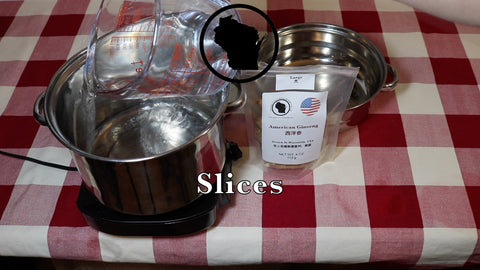
Chewing ginseng slices throughout the day is a delicious way to maintain energy. It is a great natural replacement for gum or chewing tobacco. Pre-sliced ginseng is available from our website, but if you prefer you can also slice it yourself.
In order to slice the hard dried ginseng roots, they must be steamed until they are soft. If you don’t own a ginseng cooker, you can simply steam the ginseng roots until they are soft in a vegetable steamer. This will take 15 to 30 minutes depending on the thickness of the roots. Once they are soft, thinly slice with a sharp knife. You can eat the slices right away and air dry the rest on a kitchen towel for a few days before storing in an airtight bag or container.
Making a Ginseng Alcohol Tincture

Alcoholic herbal tinctures are a common way to prepare many different herbs. While ginseng can be easily extracted into hot water, using alcohol results in a potent final product that will stay preserved for years without refrigeration. Just a few teaspoons can provide a powerful dose.
It is recommended to use an alcohol of at least 80 proof or higher, but the higher the proof the better. Use an alcohol without any added sugar such as grain alcohol, vodka or whiskey. Place the ginseng root in a mason jar. Tea-cut ginseng, prongs or smaller roots work best. Use a ratio of 2 oz of dried root per 8 oz cup of alcohol. Allow the mixture to sit for at least 2 to 8 weeks, shaking every couple of days. Tea-cut ginseng should take less time to extract due to the smaller size, but may absorb more of the liquid and reduce yield. After the mixture has steeped, strain the liquid and store inside a sealed jar in a cool, dark place. Start with a dose of 1 teaspoon and increase as needed.
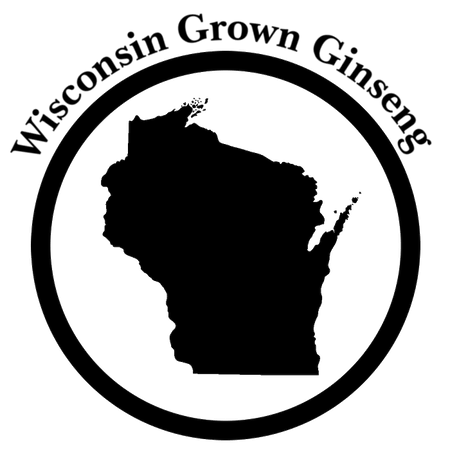




1 comment
I buy the tincture from Wisconsin Grown Ginseng and mix it in a little water. I like the natural flavor. It seems to help my energy and hopefully my overall health.
Michael Spindler